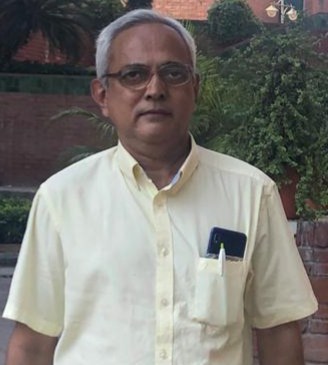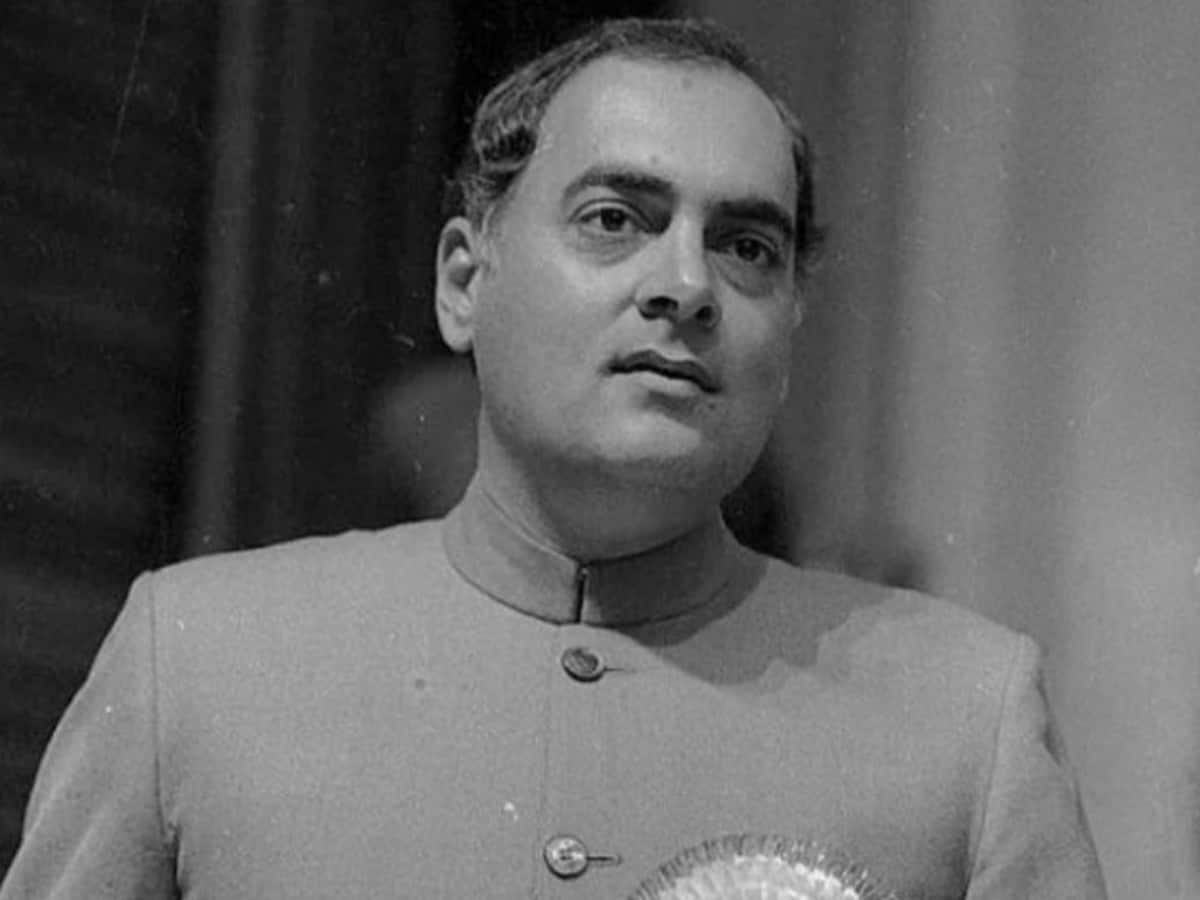
May 21, 2021, marks three decades since the tragic assassination of former Prime Minister Rajiv Gandhi on May 21, 1991, in the midst of the campaign during the General Election in 1991. Significantly, Rajiv Gandhi made his electoral debut on May 12, 1981, by filing his nomination papers for the Amethi Lok Sabha constituency in Uttar Pradesh, in the by-election necessitated by the tragic demise of his younger brother Sanjay Gandhi on June 23, 1980. On May 21, 1991, Rajiv Gandhi attained Martyrdom.
Rajiv Gandhi had addressed the last public meeting in Odisha on May 21, 1991. Later in the day, he visited Visakhapatnam in Andhra Pradesh for a roadshow for Congress Lok Sabha Candidate Uma Gajapati Raju. That was his last campaign. Soon after, late in the evening, he left for Chennai, en route to Sriperumbudur. The tragic end came with the powerful explosion of the human-bomb at a Congress election rally in Sriperumbudur in Tamil Nadu.
Sheela Priya Gesture
Significantly the then Chengalpattu District Collector M Sheela Priya, IAS, who was supervising the security arrangements and was close by at the time of the assassination, decided to personally sign on Rajiv Gandhi Death Certificate, as a special gesture. The Death Certificate is signed normally by a block-level Revenue official.
Sheela Priya went on to hold high posts, including Secretary to the then Tamil Nadu Governor Dr M Channa Reddy and later Secretary to Tamil Nadu Chief Minister J Jayalalithaa.
The BJP-Left Front supported National Front Government of V P Singh at the Centre had withdrawn the elite Special Protection Group (SPG) cover for Rajiv Gandhi.
This was done on a specious technical ground that as former Prime Minister, he was not eligible for SPG cover, which is provided only for incumbent Prime Minister.
Withdrawal of SPG Cover
This decision to remove SPG cover to Rajiv Gandhi was taken without reference to ground reality and the threat-perception assessment to a high-profile political leader.
Rajiv Gandhi faced grave threat to his life from the LTTE, since the Indo-Sri Lankan Peace Accord signed on July 29, 1987, and his decision to send in the Indian Peace-Keeping Force (IPKF) to Sri Lanka.
To that extent, Rajiv Gandhi shared the trait of Indira Gandhi, of going to any extent in the pursuit of his policy decisions. He never hesitated to press ahead with policy decisions, however unpopular these may eventually prove to be, if only these are seen to be in the best national interest; even if it meant risk to one’s own life.
In a short span, Rajiv Gandhi achievements were truly remarkable. 2021 also marks three decades of the Economic Reforms ushered in 1991. The Economic Reforms was the brainchild of Rajiv Gandhi.
A little-known fact is that Rajiv Gandhi was the first to declare that the Public Sector is a white elephant. He started working on Economic Reforms, though he could not push it through during his tenure as the Prime Minister.
Ahead of His Times
Rajiv Gandhi was ahead of his times. He worked on Economic Reforms; sought to usher India into the 21st Century; lowered the voting age to 18 years; brought in Computerization, thus laying the foundation for Digital India; ushered in the Telecom Revolution; strengthening the Panchayat Raj institution by conferring Constitutional status; and the list is unending.
In fact, Rajiv Gandhi scripted the Economic Reforms. P V Narasimha Rao was entrusted with the task of drafting the Congress Election Manifesto of 1991, which included the Blueprint for Economic Reforms. Rajiv Gandhi was assassinated in the middle of the General Election in 1991. Narasimha Rao, who succeeded as the Congress President and Prime Minister, went on to implement the Economic Reforms.
The economic crisis only coincided with the unveiling of the economic crisis in 1991. Irrespective of the economic crisis of 1991, the Economic Reforms would have been implemented.
Economic Reforms
The Economic Reforms conceived by Congress did not entail Privatization of the Public Sector.
The Budget Speech in 1991 provided to offer up to 20 percent of Government equity in selected PSUs, to Mutual Funds and investment institutions in the public sector, as also to workers in these firms. The goal was defined as “to raise resources, encourage wider public participation and promote greater accountability.”
The Industrial Policy Resolution of July 24, 1991, stated, “In the case of selected enterprises, part of the Government holdings in the equity share capital of these enterprises will be divested in order to provide further market discipline to the performance of public enterprises.”
The C Rangarajan Committee in April, 1993, further clarified divestment in the industries explicitly reserved for the public sector should not exceed 49 per cent. Only for others, in could be 74 per cent or even 100 per cent. The Rangarajan Committee also specified 6 Schedule A Industries, where the Government may consider holding 51 per cent or more equity in (1) Coal and Lignite; (2) Mineral Oils; (3) Arms, Ammunition and Defence Equipment; (4) Atomic Energy; (5) Radioactive Minerals; and (6) Railway Transport.
The Congress-supported United Front Government in 1996 stated, “The question of withdrawing the Public Sector from non-core strategic areas will be carefully examined, subject, however, to assuring the workers and employees of job security, or, in the alternative, opportunities for retraining and redeployment. The United Front Government will establish a Disinvestment Commission to advise the Government on these steps. Any decision to disinvest will be taken and implemented in a transparent manner.”
It was the Vajpayee Government in 1999 that changed the policy paradigm. Based on the Disinvestment Commission recommendations, it favoured Ownership/ Management Transfer, instead of Public Offering that was recommended by the C Rangarajan Committee in 1993.
Other Initiatives
Similarly, he entrusted drafting of the New Education Policy to P V Narasimha Rao, who was designated as Human Resources Development Minister. The Navodaya Schools it entailed and the Residential Schools for Weaker Sections were a runaway success.
Women’s Reservations in the Local Body polls was a revolutionary step, as it helped create millions of women leaders at the grassroots level of democracy. The 63rd and 64th Constitution Amendment Bills for conferring statutory status on Panchayats and Urban Local Bodies provided for reservations for women.
These Constitution Amendment Bill’s were defeated in Rajya Sabha by BJP leader Atal Behari Vajpayee.
Immediately, Rajiv Gandhi reccomended dissolution of the Lok Sabha and holding of elections. In 1992, the Constitution 73rd and 74th Amendment Bills were enacted by the P V Narasimha Rao Government.
Comgress President Sonia Gandhi carried it forward with Women’s Reservations Bill providing it in the State Legislatures and in Parliament, which was passed in Rajya Sabha and is waiting to be passed in the Lok Sabha.
Venkat Parsa is a senior journalist and writer based in New Delhi.
Views expressed are personal

